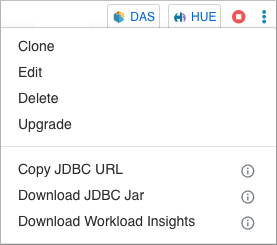Setting up a mini HiveServer
You follow a step-by-step procedure to get a docker image of HiveServer (HS2) and example files to simulate working with HiveServer in a cluster. In local mode, you do not get actual recommendations, but you experiment with and understand recommendations using this mode without incurring any cloud costs.
You download the workload-insights archive and unpack it. You run one docker command to start HiveServer and another to load the TPC-DS schema. Example query files, based on the TPC-DS Benchmark DDL queries, are included in the package. No actual data is needed.
- Check that Java 8 or later is installed.
- Install Docker (https://docs.docker.com/get-docker/).
- Check that Docker is working:
docker run hello-world

